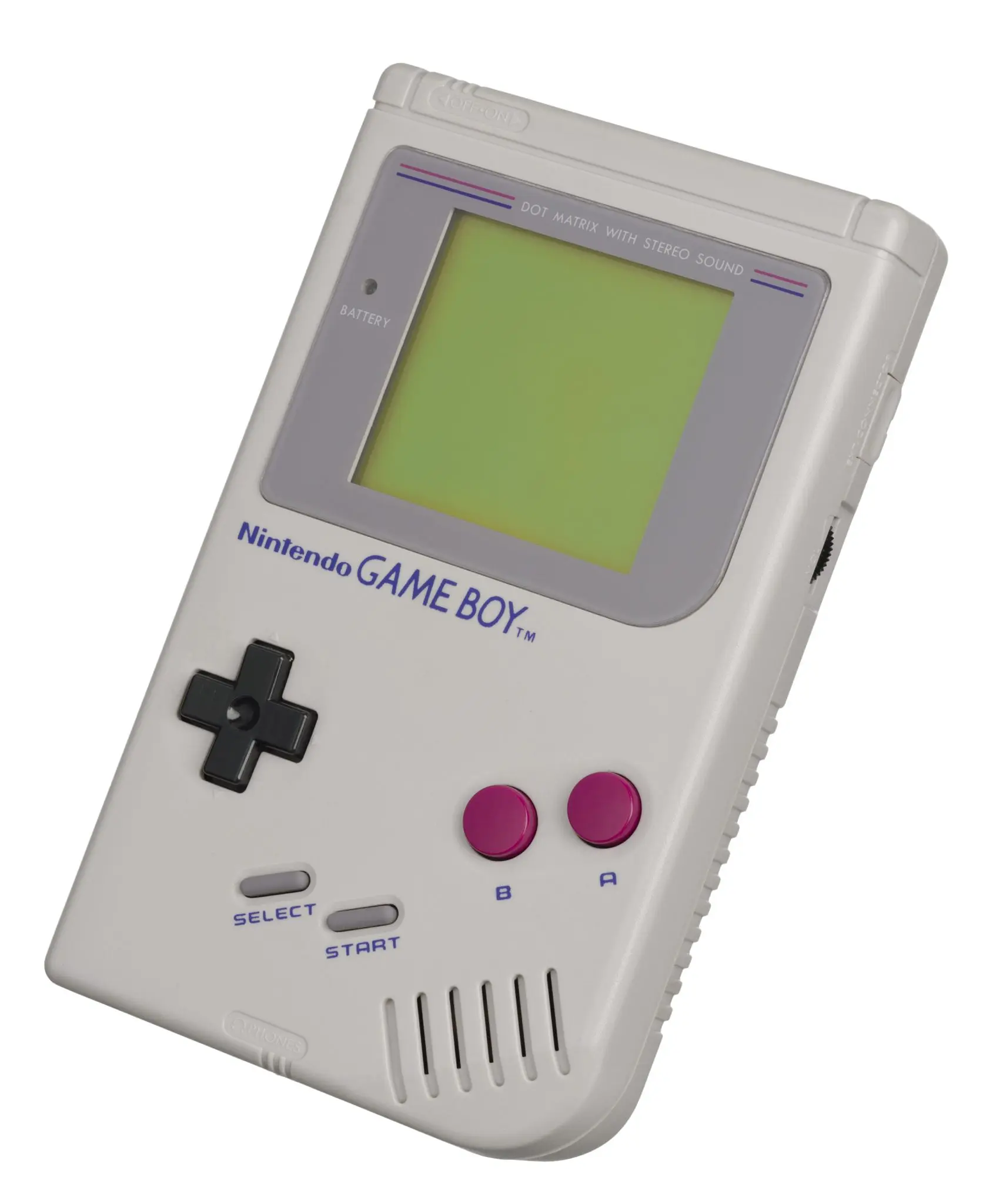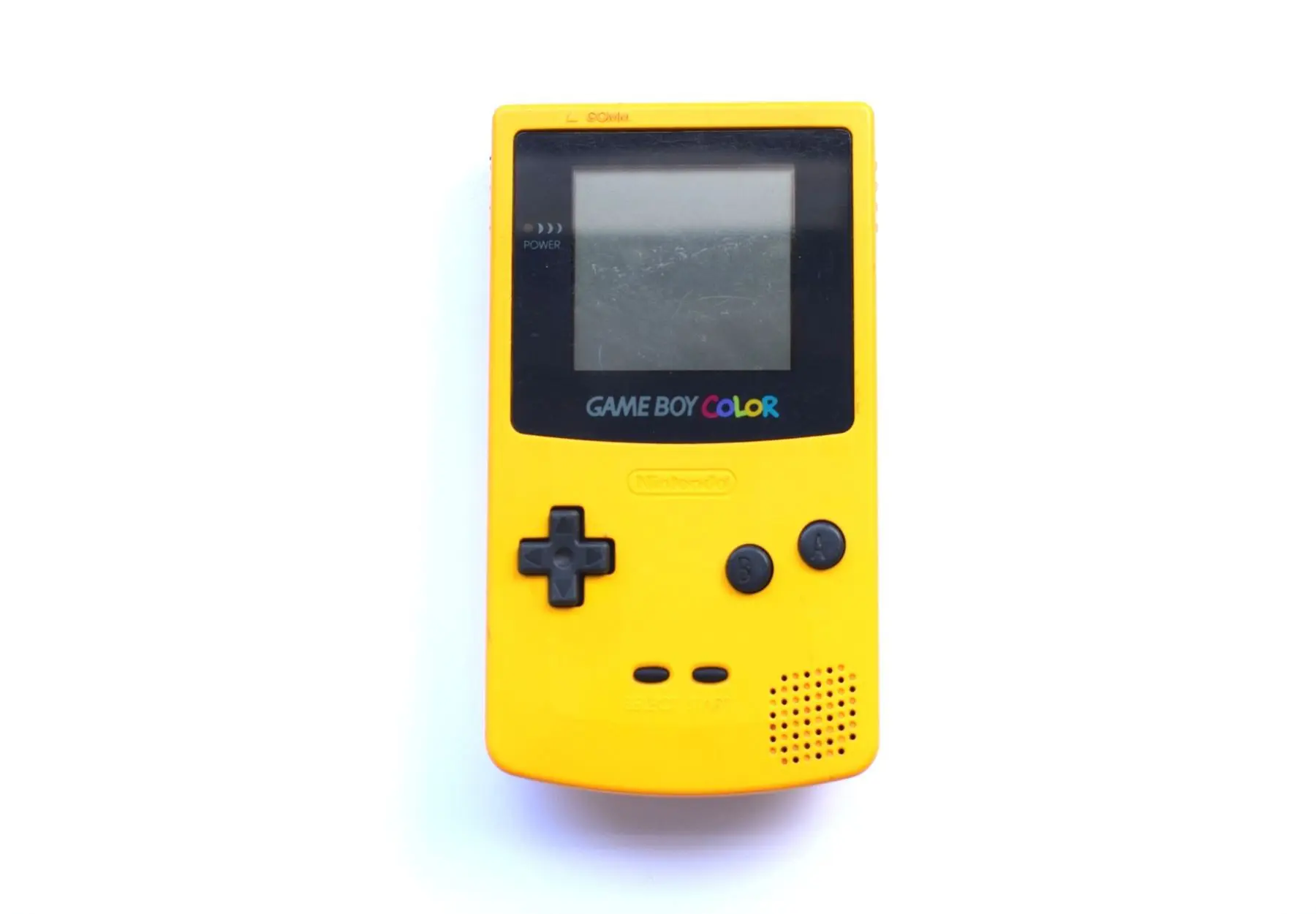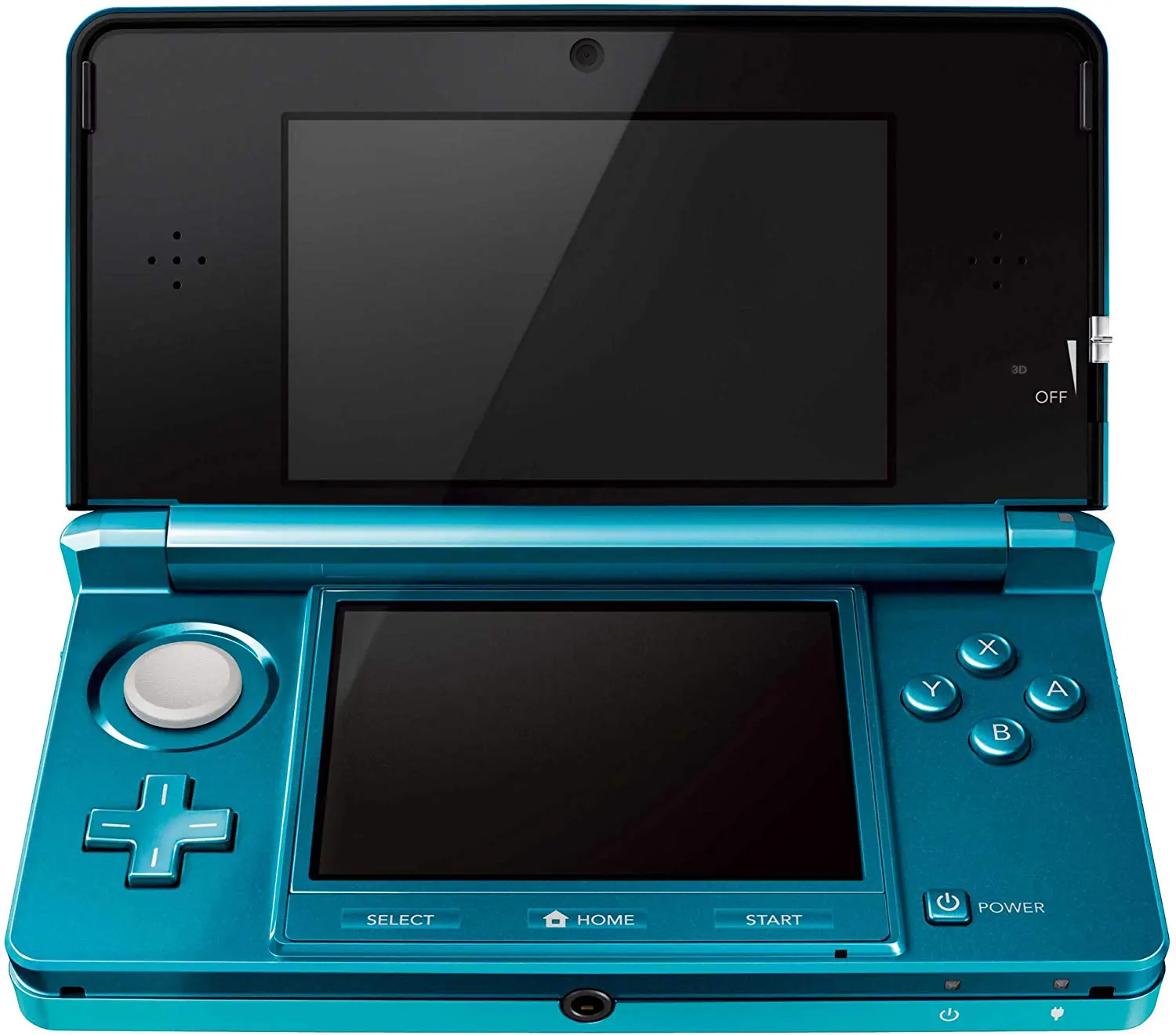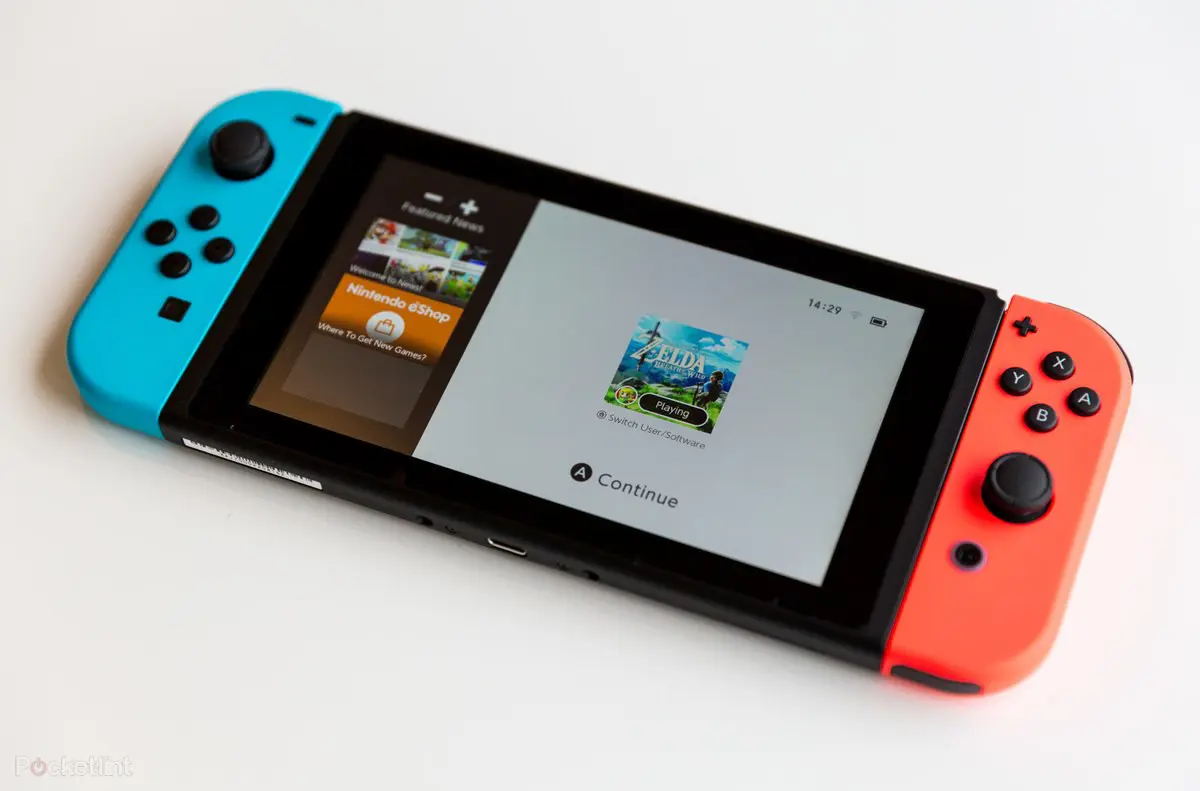Gaming PCs are constantly evolving, often astounding expectations through the utilisation of the latest technology. In that respect, Nintendo has done it all. Ranking the highest out of all console developers in terms creativity, imagination and endless gaming fun, when it comes to guaranteed innovation, nobody is greater than Nintendo.
Established back in 1889, Nintendo has been at the top of the console gaming world for over a century. In fond recollection of this gaming mega-brand, we take a look at the evolution of Nintendo handhelds.
The GameBoy (1989)
The first handheld console created by Nintendo was the basic, sturdy GameBoy. A revolution at the time, the Gameboy was a reliable device that could allow the gamer to enjoy a large selection of games. With the graphics being ahead of the time, the GameBoy console allowed the players to play the game using a small black and white gaming screen.
When playing, each individual object within the games were made up from squares. This is because at the release of GameBoy, the technology had not yet been created to craft super sleek curved lines or detailed, simple shapes that could be 2D and compatible with the system.
Made using 8×8 pixel blocks, the resolution of the screen was a total of 160×144 pixels. When choosing a game to play on the GameBoy, the most popular game was Tetris. Made up of tiny, square shapes, Tetris didn’t require any colour or detail and was the perfect match for playing on the original GameBoy.
The GameBoy Color (1998)
As can be guessed from the name, the biggest update that is evident in the GameBoy Color is the addition of an exciting colour screen, alongside a number of physical changes, helping to improve and ‘futurize’ the console size.
With a near decade gap between the two consoles, the break from development benefited the system, allowing for the addition of some serious updates. Nintendo evolved the handheld to an 8-bit machine mechanism, that still enabled the transfer of the same amount of data as the original as well as upping the resolution of the screen.
This, plus the addition of colour and the slightly more defined shape of the console, users could really differentiate between the two consoles.
The GameBoy Advance SP (2003)
This new generation of Nintendo gaming launched in the early millennium and offered a sneak peak into a future world. Showing advances in physical designs, the GameBoy Advance SP was foldable, for added screen protection and portability.
With a larger screen, the screen from the new GameBoy was now 2.9 inches and had a reflective LCD colour, as well as an upgraded resolution of 240×160 pixels.
Offering a more detailed gaming experience, the SP console benefited from the addition of a front light at the front of the console. This handy new development allowed the background of the game to be lit from the side, creating a brighter and more defined gaming experience which was absent on previous handhelds.
 The Nintendo DS (2004)
The Nintendo DS (2004)
A new, redesigned shape of console, the launch of the Nintendo DS brought much buzz and excitement to the gaming community. From the new shape, to the addition of another screen, audiences were amazed at the touch screen experience for users. For many avid gamers, however, the launch of the Nintendo DS brought more disappointment than excitement when it came to its physical attributes. This was due to the console being an uncomfortable size to hold and launched in an unappealing plastic silver colour.
When it came to the graphics of the Nintendo DS, audiences were shocked at the lack of amendments made to the newer console. It featured the exact same graphics of GameBoy Advance SP, which Nintendo viewed as being of a superior quality, and saw no need to update them.
It wasn’t all bad news though. The addition that extra screen, which also enabled the DS to have some 3D qualities, was well received. It was noted as being an excellent change-up when playing games, allowing gamers enjoy greater levels of definition, seeing the game with more sharpness and colour.
The Nintendo DS Lite (2006)
The launch of the Nintendo DS Lite in 2006 saw amendments to not just the physical appearance of the console, but also the battery and an additional front facing camera. Still with two screens and with the popular touch technology and 3D gaming, the DS Lite created a ripple of excitement within the world of gaming.
With a sleek and crisp design, the latest iteration in Nintendo handhelds saw the removal of the silver plastic exterior and revamped with a glossy, professional looking finish. With a superior screen, that offered a sharp, bright and bold performance, gamers could clearly see facial features and body shapes when playing on their Nintendo DS Lite.
 The Nintendo 3DS (2011)
The Nintendo 3DS (2011)
The emergence of the Nintendo 3DS saw the development in design, different to that of its predecessors. Keeping with the sleek, professional glossy colour, but amending the control pads, an added, updated nub pad was also included to give the user more control over the 360 view within each game.
Where the 3DS really flourished, was in its graphics and it was seen by some as being the best Nintendo handheld console released to date. This mostly down to the 3DS utilising a 800 x 240 pixel resolution, as well as a LCD screen of 16.77 million colours. The wide screen on the console, and the improved resolution, allowed the colours to be bolder and give a clearer definition of the characters within games, for more dynamic experiences.
With updates made outside of the graphic quality, the Nintendo 3DS also saw the addition of an extra added camera, the improved camera features also included 3D qualities, 640×480 resolution, as well as a pixel count of around 300,000.
 The Nintendo Switch (2017)
The Nintendo Switch (2017)
2017 saw the launch of the Nintendo Switch. This revamped and revised idea of the handheld saw the emergence of a new shape, track-pads at either end of the console, as well as a wide screen not yet experienced within a Nintendo device.
Being to a higher quality, the Nintendo Switch was designed with a HD screen, that was also an exciting 6.2 inches in size and with a 1280×720 resolution, creating the clearest and most defined graphics experienced by handheld gamers to date.
Offering a clear, smooth and realistic gaming experience, the Nintendo Switch also paved the way in how gamers use their consoles. Allowing users to play multiplayer games from the same device, the Nintendo Switch was designed with the added feature of docking. By docking, gamers could project their game onto a TV screen, without losing vital quality and resolution. A huge hit, The Nintendo Switch was later released in a revamped Lite model to the same success as its predecessor.
Changing the way the fundamental way handheld gaming consoles are used, The Nintendo Switch can be seen as a gateway to bigger and exciting things.
The Future of Nintendo Handhelds
It’s clear to see that Nintendo has, and likely always will, trump handheld consoles created by other brands. With each generation topping the previous one, both in physical shape and technology, Nintendo is a force to be reckoned with.
By looking at the evolution of Nintendo handhelds, we can start to think about what will be heading our way in the future. Whether it be breaking the boundaries and adding a second, touch screen or the use of colour for the first time, Nintendo are always changing the way we look at handheld gaming. What can be seen through the launch of the Nintendo Switch and the ability to dock and play console gamers on a larger scale, is that the future of handheld console gaming looks to be revolutionary.
Whatever comes next, it is all but certain Nintendo will once again change the way we look at handheld gaming.
If you liked this article, please check out more of our gaming content!




 The Nintendo DS (2004)
The Nintendo DS (2004) The Nintendo 3DS (2011)
The Nintendo 3DS (2011) The Nintendo Switch (2017)
The Nintendo Switch (2017)